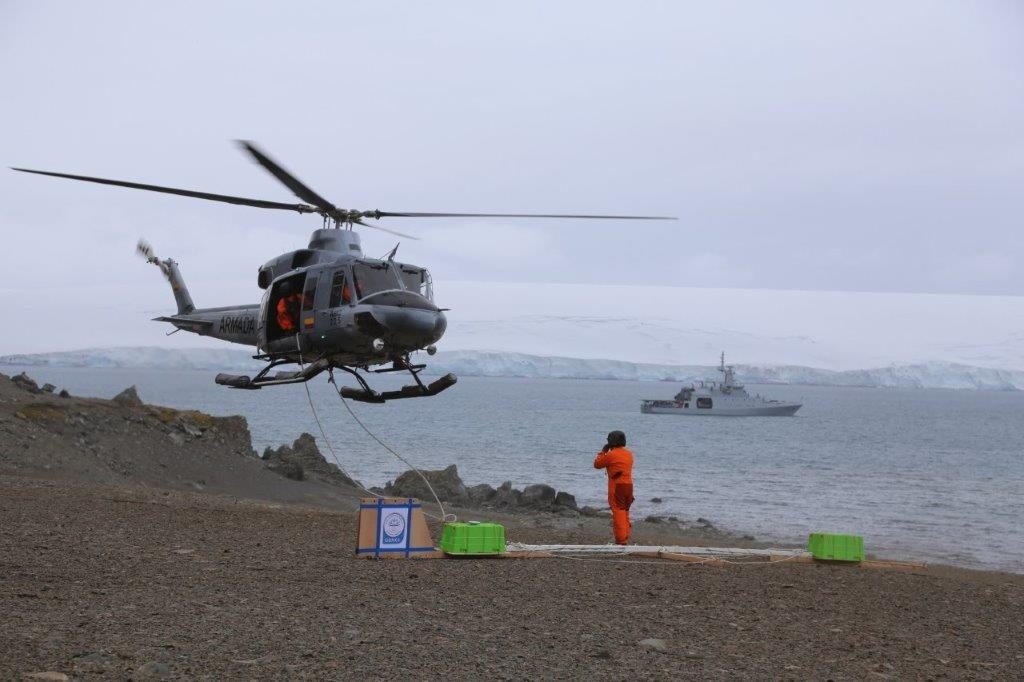Glacier dynamics, mass balance and ocean interactions at the western margin of the Antarctic Peninsula and the South Shetland Islands. Some analogue processes in the Arctic (DINGLAC 2021-2025) (PIs: Francisco Navarro and Jaime Otero)
The final aim of DINGLAC project is to estimate the ice discharge to the ocean from the glaciers on the north-western Antarctic Peninsula (AP) and surrounding islands, including the South Shetland Islands (SSI), and to analyse the partitioning of the ice discharge into iceberg calving and submarine melting. The reason to focus our study on the AP is that its landed ice masses are currently contributing to sea-level rise (SLR) by 0.22 mm per year, but have the potential to rise global sea-level by more than 0.24 m (if all of their glaciers were melted). Though 0.22 mm per year can seem a small number, this represents 6.5% of the contributions to global SLR from all sources (basically glacier wastage and thermal expansion of the oceans), 11.5% of the total contribution of glaciers and 50% of the Antarctic ice loss contribution. The reason to limit our analysis to the NW AP (in particular, the western margin north of 70 degrees south) is that this region has been comparatively less studied that the rest of the AP, and the uncertainties of the currently-available estimates are large. Moreover, the recent climate evolution of the AP region has been complex, with one of the largest warming trends on Earth during the second half of the 21st century (locally up to 0.54 C/decade) followed by a cooling period 1999-2017, most marked on the northern AP, and a return to warming conditions afterwards.
We will calculate the dynamic ice discharge by combining remotely-sensed ice velocities, obtained from satellite synthetic-aperture radar data, and ice-thickness retrieved from ground-penetrating radar measurements, mostly airborne. All of these data are freely available at international repositories or through collaborations with international partners. The glacier bed data available for the AP, however, presents deficiencies, locally important, which motivates the undertaking in our project of a bed reconstruction for the AP using inverse methods.
As the frontal advance/retreat of the sea-terminating glaciers at the western margin of the AP has been shown to be strongly influenced by intrusion of warmer mid-depth ocean waters, we are also interested in gaining understanding into the glacier-ocean interactions and, in particular, on the partitioning of ice discharge into iceberg calving and submarine melting. This will be done by developing a 3D coupled glacier dynamics-fjord circulation model, including a more computationally efficient version, with the latter model replaced by a parameterised buoyant plume model. As this coupled model is very demanding in terms of required input data, we will initially test it using data from Svalbard tidewater glaciers, for which a rich set of observational glacier and ocean data is available.
Other themes addressed by our project will be i) the estimate of the geodetic mass balance for the whole SSI archipelago, ii) the calculation of the surface mass balance of Hurd and Johnsons glaciers, on Hurd Peninsula, Livingston Island, by the glaciological method and its supply to the World Glacier Monitoring Service database, iii) the development of geostatistical techniques to improve the DEMs of ice-thickness and bed/surface elevations, and iv) the exploration of the mechanisms underpinning the link between microbial productivity and export from Livingston Island glaciers to the surrounding ocean to evaluate its implications for coastal Antarctic biogeochemistry.
